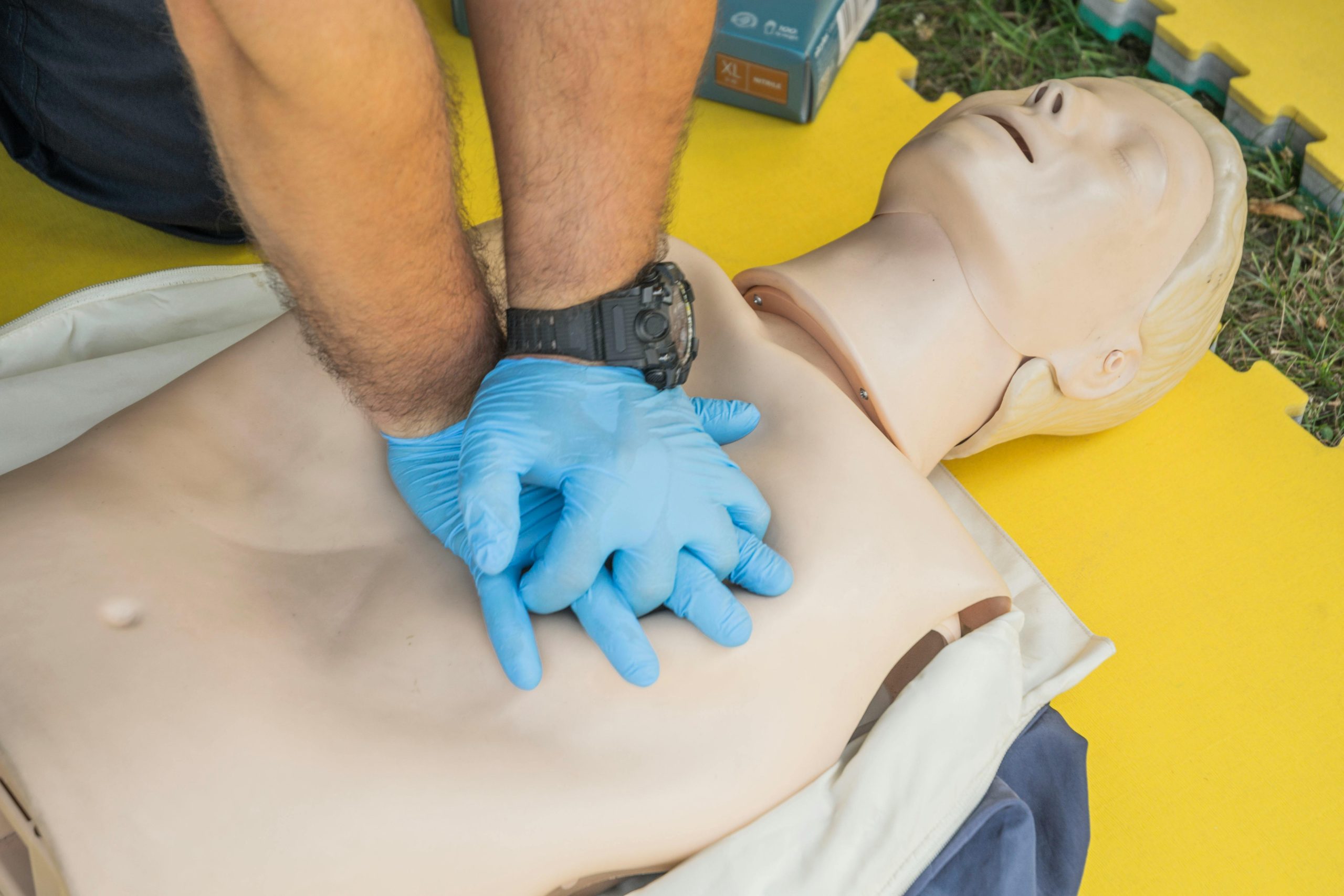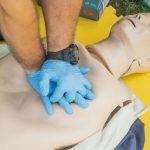When seconds count during a workplace emergency, are your employees prepared to respond effectively? According to the Health and Safety Executive 2025 report, workplaces with trained first aiders reduce injury severity by 67% compared to untrained environments. Professional On Site First Aid Training transforms ordinary employees into confident responders, creating safer workplaces while ensuring regulatory compliance and potentially saving lives when emergencies strike.
Core Components of Effective Workplace Emergency Response Training
A comprehensive workplace emergency response training program encompasses several critical modules designed to prepare employees for various medical crises. Each component builds upon fundamental life-saving skills while addressing specific workplace scenarios that teams may encounter.
Also read : Revitalizing rural health: cutting-edge community strategies to overcome wellness inequities
The most effective training programs integrate both theoretical knowledge and hands-on practice across these essential areas:
- CPR certification covering adult, child, and infant resuscitation techniques with proper chest compression depth and rhythm
- Airway management skills including the Heimlich maneuver, positioning techniques, and recognition of choking emergencies
- Wound care and bleeding control using direct pressure, elevation, and pressure point techniques for various injury types
- Medical emergency response protocols for heart attacks, strokes, seizures, and diabetic emergencies commonly seen in workplace settings
- AED operation and maintenance with scenario-based practice using workplace-specific emergency equipment
Each module requires practical demonstration and competency assessment to ensure employees can respond confidently during actual emergencies. Regular refresher training helps maintain these critical skills and keeps certifications current.
This might interest you : Understanding your child: expert psychologist in london
Benefits of Bringing Certified Safety Training Directly to Your Facility
On-site safety training transforms the traditional learning experience by eliminating the logistical challenges that often plague off-site programs. When certified instructors come directly to your workplace, you eliminate travel time, reduce scheduling conflicts, and ensure that all designated employees can participate without disrupting daily operations. This approach significantly reduces downtime while maintaining productivity levels that external training sessions simply cannot match.
The most compelling advantage lies in the contextual learning environment that on-site training provides. Instructors can incorporate your facility’s specific hazards, equipment, and emergency protocols directly into the curriculum. Whether you’re dealing with chemical storage areas, heavy machinery, or unique architectural challenges, the training adapts to your real-world scenarios rather than generic case studies.
Employee engagement naturally increases when training occurs in familiar surroundings. Participants feel more comfortable asking questions, practicing techniques, and discussing workplace-specific concerns. This enhanced participation leads to better knowledge retention and more confident emergency response capabilities. The training becomes immediately relevant because employees can visualize applying their new skills in the exact locations where emergencies might occur, making the learning experience both practical and memorable.
How to Choose the Right Emergency Training Provider for Your Business
Selecting the right emergency training provider can make the difference between effective workplace safety and costly compliance gaps. The choice requires careful evaluation of several critical factors that directly impact your team’s preparedness and your organization’s risk management.
Accreditation stands as the foundation of any quality training program. Look for providers certified by recognized bodies like the Health and Safety Executive or equivalent regulatory organizations. These credentials ensure that your employees receive training that meets current industry standards and legal requirements.
Industry-specific experience matters significantly when evaluating potential training partners. A provider familiar with your sector understands the unique risks and challenges your employees face daily. They can tailor scenarios and examples to reflect realistic workplace situations, making the training more relevant and memorable.
Program flexibility demonstrates a provider’s commitment to meeting your specific needs. The best training companies offer customizable courses that accommodate different skill levels, shift patterns, and workplace constraints. They should be willing to adapt their curriculum to address your particular safety concerns and operational requirements.
Post-training support separates exceptional providers from basic service suppliers. Quality training companies offer refresher materials, ongoing consultation, and guidance on implementing new procedures. This continued partnership ensures that emergency skills remain sharp and workplace safety culture continues to develop beyond the initial training session.
Implementing Comprehensive Safety Programs: From Planning to Certification
A successful workplace safety program begins with a thorough needs assessment that evaluates your specific industry risks, employee roles, and regulatory requirements. Our training specialists conduct comprehensive site evaluations to identify potential hazards and determine the most relevant first aid scenarios your team might encounter.
The planning phase involves designing customized training sessions that align with your operational schedule and learning objectives. We work closely with management to establish optimal group sizes, select appropriate training locations on your premises, and develop practical scenarios that mirror your actual workplace environment.
During training delivery, participants engage in hands-on practice with real-world emergency simulations. Our certified instructors guide employees through essential techniques including CPR, wound management, and emergency response protocols. Interactive demonstrations ensure every participant gains confidence in applying life-saving skills under pressure.
Competency evaluation follows a structured approach combining written assessments and practical skill demonstrations. Each participant must successfully demonstrate key procedures to earn their certification. Upon completion, employees receive nationally recognized first aid certificates valid for three years, with detailed documentation for compliance records and ongoing professional development tracking.
Maximizing ROI Through Strategic Workplace Safety Investment
Every dollar invested in workplace safety training generates measurable returns that extend far beyond regulatory compliance. Companies consistently discover that comprehensive safety programs create a powerful financial foundation that strengthens their bottom line.
The most immediate impact comes through accident reduction. When employees receive proper first aid and emergency response training, workplace incidents decrease significantly. This translates directly into lower workers’ compensation claims, reduced medical expenses, and fewer costly production interruptions. Many organizations see their incident rates drop by 30-50% within the first year of implementing structured safety training programs.
Insurance premiums represent another area where strategic safety investment pays dividends. Carriers recognize companies that prioritize employee safety training and often reward them with reduced premium rates. These savings compound annually, creating substantial cost reductions over time.
Beyond direct cost savings, safety-trained workforces demonstrate higher productivity levels and improved morale. Employees who feel confident in their ability to handle emergencies work more efficiently and take fewer sick days. This enhanced performance creates additional value that reinforces the business case for comprehensive workplace safety investment.
Your Questions About Workplace Emergency Training Answered
Choosing the right workplace emergency training can raise many questions. Here are the answers to the most common concerns employers have about implementing first aid programs in their organizations.
How long does workplace first aid training take to complete?
Most workplace first aid courses take 6-8 hours for basic certification and 16-24 hours for comprehensive programs. Duration depends on group size, skill level, and specific workplace requirements.
What certifications do employees receive after completing on-site first aid courses?
Participants receive nationally recognized certifications valid for 2-3 years. Certificates include CPR, AED usage, and workplace-specific emergency response skills meeting regulatory compliance standards.
How much does it cost to bring first aid training to our workplace?
On-site training costs vary by group size and program depth, typically ranging from £50-150 per person. Group rates offer significant savings compared to individual off-site courses.
What topics are covered in workplace emergency response training programs?
Programs cover CPR, choking response, wound care, burns, fractures, shock treatment, AED operation, and workplace-specific scenarios like chemical exposure or machinery accidents based on your industry.
How often should employees refresh their first aid training certification?
Most certifications require renewal every 2-3 years. However, annual refresher sessions help maintain skills and confidence while ensuring your team stays current with best practices.











